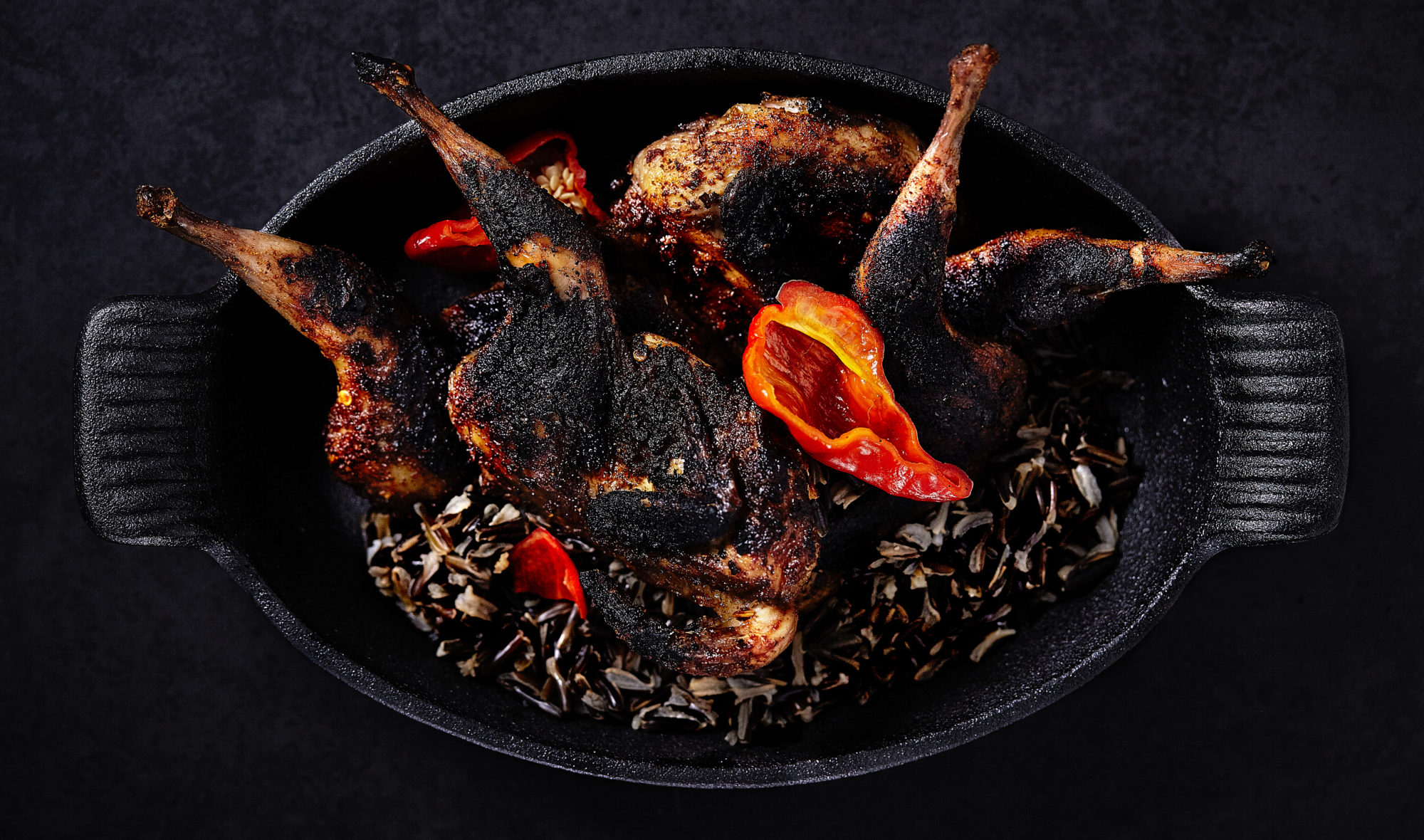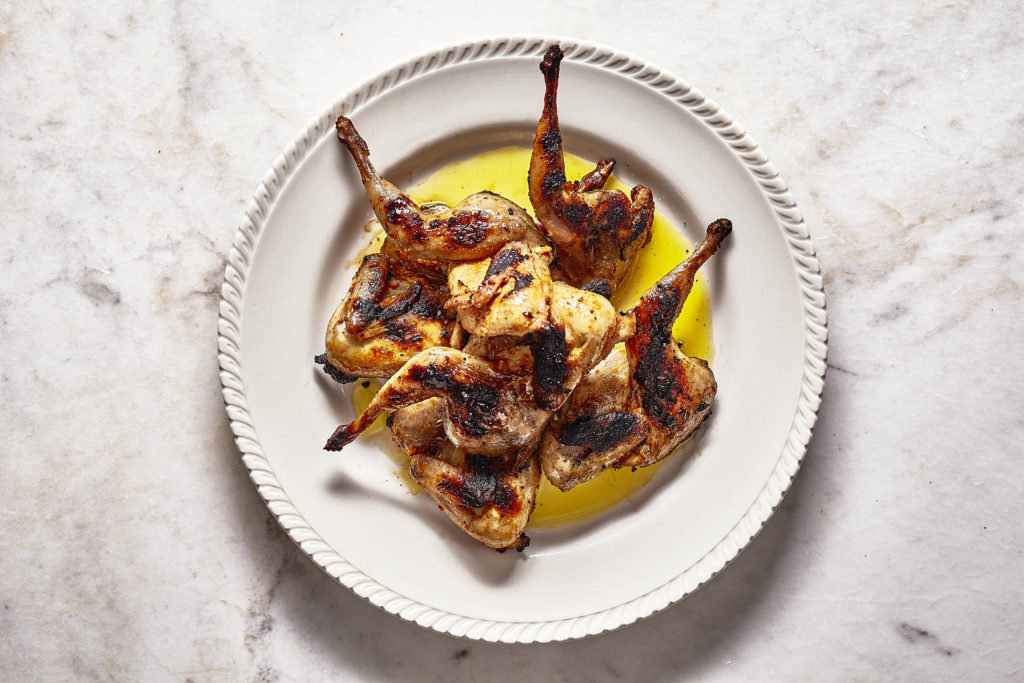Quail


Quails are the smallest members of the Galliformes family, which also includes chickens, turkeys, geese, and ducks. Like many members of this family, quails tend to be plump and easy prey. Although quails are not mainstream fare, humans have been breeding them for food for over ten thousand years. Quails are easy to keep in captivity, easy to cook, and have tender, flavorful flesh. Their taste is similar to, although more assertive than, chicken, and even their small, tender bones can be eaten. They are so small that even one whole bird would serve only as an appetizer for a human appetite. Like most animals, quails are rich in protein. They are also a good source of iron, vitamin B6, zinc, and vitamin B3. For those who cannot bear to eat these creatures, quails are also sometimes kept as pets, and lay tiny speckled eggs that are also edible.
Galliformes is an order of birds, many of which we eat. In this family we find chickens, geese, ducks, turkeys, pheasants, and others. The pinky finger of this family, the smallest of them all, are quails.
Quails are easy birds of prey. They are small, heavy-bodied, and they don’t run very fast or fly very well. Although they have sharp beaks, they are more cute than intimidating, except maybe to a small bug or a worm. For these reasons, quails end up being lunch for many species higher on the food chain.
There are over two hundred species of quails, which vary slightly in size and appearance. Most are between five and ten ounces. Some have smooth heads, and others have a stylish cowlick of plumes.
Europeans have been breeding quails for food for over ten thousand years, and records show that the Egyptians were breeding them even before that.
For those who cannot bear to eat these creatures, quails are also sometimes kept as pets, and lay tiny speckled eggs that are also edible.
Quails are small birds. One quail would be an appropriate hors d’oeuvre, whereas at least two would be more appropriate for an entrée.
Quails have a good ratio of meat to bones, and given tenderness and small size, the bones are usually eaten as well, instead of being removed. Quails have a delicate flesh with a taste that’s similar to chicken, but more flavorful.
One 4 oz portion of cooked quail (about 113g) has 257 calories, 28.5g of protein, 16g of fat, and no carbohydrates, fiber, or sugar. Quail is a good source of iron, vitamin B6 (pyridoxine), zinc, and vitamin B3 (niacin).
Quails are not typically available in most grocery stores, and may either have to be special ordered, or purchased at specialty butchers.
Quails may be sold bone-in or de-boned, fresh or frozen.
Select birds that look plump with creamy, yellowish skin with a healthy pink tinge. The skin should look moist, but not wet. Their smell should be neutral. If you come across quails that have a greyish color or smell “off”, pass them by.
Fresh quail should be prepared shortly after purchase. Store quails in a sealed package in the fridge for two to three days before cooking, or freeze them for up to six months.
Once cooked, quail can stay fresh in the fridge for up to four days, or in the freezer for up to three months.
Quail must be cooked before eating it. Luckily, it is easy to cook and well-suited to many different methods of preparation, such as braising, roasting, or grilling.
Oven roasted quails are simple and fast. Here’s how to do it:
Preheat the oven to 500 degrees Fahrenheit. Rub the quails with olive oil and your choice of seasoning. Arrange the birds on a roasting pan and place in the oven. Roast for about 10 minutes, then remove from the oven and baste with juices. Place back in the oven and roast for another 10 minutes or so. Remove from the oven, allow to cool slightly, and serve with juices alongside your choice of sides.

Switch up your usual dinner choice with this delicious quail recipe. Serve with a side of your choice and enjoy.
Prep Time: 20 minutes Cook Time: 15 minutes Yield: 6 servings
Prep all ingredients, and along with the quail place them into the plastic bag. Gently massage the flavors in the bag into the quail. Lay the bag flat in the fridge for a few hours, or overnight.
To cook the quail, remove it from the fridge to sit out at room temperature for at least 1 hour.
When ready, preheat a stove top grill pan to a really high temperature.
Remove the quail from the bag and place onto a plastic cutting board. Working one at a time, with a sharp knife, split the game bird in two down the length of the spine and breast bone. Repeat this for each quail.
When ready, cook each half meat side down for about 7 minutes, to sear and brown the skin (you may need to do this in batches). Turn them over to the other side, cooking for another 5 minutes. If you have a cooking thermometer, your reading should be about 180 degrees Fahrenheit.
Serve with the side of your choice. Enjoy!
Precision Nutrition’s Encyclopedia of Food expands every single month as we highlight new foods and showcase beautiful food photography. If you’d like to stay up to date, simply click this link. From there, we’ll send you a FREE copy of our recipe book. We’ll also let you know when new and delicious foods are added to the site.
Quails are the smallest members of the Galliformes family, which also includes chickens, turkeys, geese, and ducks. Like many members of this family, quails tend to be plump and easy prey. Although quails are not mainstream fare, humans have been breeding them for food for over ten thousand years. Quails are easy to keep in captivity, easy to cook, and have tender, flavorful flesh. Their taste is similar to, although more assertive than, chicken, and even their small, tender bones can be eaten. They are so small that even one whole bird would serve only as an appetizer for a human appetite. Like most animals, quails are rich in protein. They are also a good source of iron, vitamin B6, zinc, and vitamin B3. For those who cannot bear to eat these creatures, quails are also sometimes kept as pets, and lay tiny speckled eggs that are also edible.